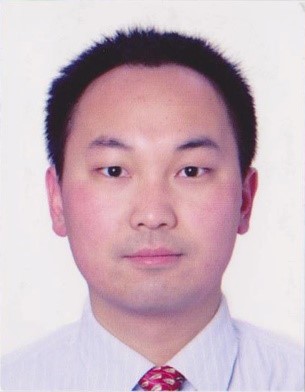 Speaker: Prof Andrea Cavalleri
Speaker: Prof Andrea Cavalleri
Affiliation: Director Max Planck Institute for the Structure and Dynamics of Matter / Department of Physics, University of Oxford
Abstract Details:
I will discuss how coherent electromagnetic radiation at infrared and TeraHertz frequencies can be used to drive collective excitations in solids nonlinearly. I will discuss how targeted excitation can be use to induce ordered states, with new symmetries not found at equilibrium. I will cover the physics of driven alkali doped fullerenes, in which driving can induce transient superconducting order and experiments in graphene, in which light can be used to induce a Floquet topological insulating state.
About the Speaker:
Andrea Cavalleri is the founding director of the Max Planck Institute for the Structure and Dynamics of Matter in Hamburg (Germany) and a professor of Physics at the University of Oxford (UK). After receiving a laurea degree from the University of Pavia (Italy), he held graduate, postgraduate, and research staff positions at the University of Essen (Germany), at the University of California, San Diego (US), and at the Lawrence Berkeley National Laboratory (US). He joined the Oxford faculty in 2005.
He is best known for his experiments in which intense TeraHertz pulses are used to drive large amplitude and coherent lattice distortions in solids, manipulating their electronic properties, and for demonstrating that one can induce non-equilibrium superconductivity far above the thermodynamic transition temperature. Motivated by the need to probe driven lattices, he has also been majorly involved in the development of ultrafast X-ray techniques, since their inception in the late 1990s through their modern incarnation at X-ray Free Electron Lasers.
Cavalleri is a recipient of the 2004 European Science Foundation Young Investigator Award, of the 2015 Max Born Medal from the IoP and the DFG, of the 2015 Dannie Heineman Prize from the Academy of Sciences in Goettingen and of the 2018 Isakson Prize from the American Physical Society. He is a fellow of the APS, of the AAAS, and of the IoP. In 2017, he was elected Member of the Academia Europaea.
Prizes, Awards and other Distinctions
Frank Isakson Prize - American Physical Society - 2018
Elected Fellow of the European Academy of Sciences - 2018
Elected Member of the Academia Europaea - 2017
Elected Fellow of the American Association for the Advancement of Science - 2016
Max Born Medal and Prize - UK Institute of Physics & German Physical Society - 2015
Dannie Heinemann Prize of the Academy of Sciences and Humanities in Göttingen - 2015
Elected Fellow of the Institute of Physics - UK - 2015
ERC Synergy Grant Award (with A. Georges, J.M. Triscone, D. Jaksch) - 2013
Medaglia Teresiana - Universita’ di Pavia, Italy - 2012
2012 Ångström Lecturer - Uppsala University - 2012
Elected Fellow of the American Physical Society - 2011
European Young Investigator Award - European Science Foundation - 2004
David Shirley Award for outstanding scientific achievement - Advanced Light Source - Lawrence Berkeley National Laboratory - 2004
Click HERE for directions
—
To view all the upcoming seminars, you can visit: https://graphene.nus.edu.sg/news-events/events/
You may also Like & Subscribe our following channels below to receive instant notifications for new announcements.


 Speaker: Prof. Kristian Sommer Thygesen
Speaker: Prof. Kristian Sommer Thygesen  Speaker: Professor Gao Libo
Speaker: Professor Gao Libo  Speaker: Stephan Roche
Speaker: Stephan Roche  Speaker: Stephan Roche
Speaker: Stephan Roche